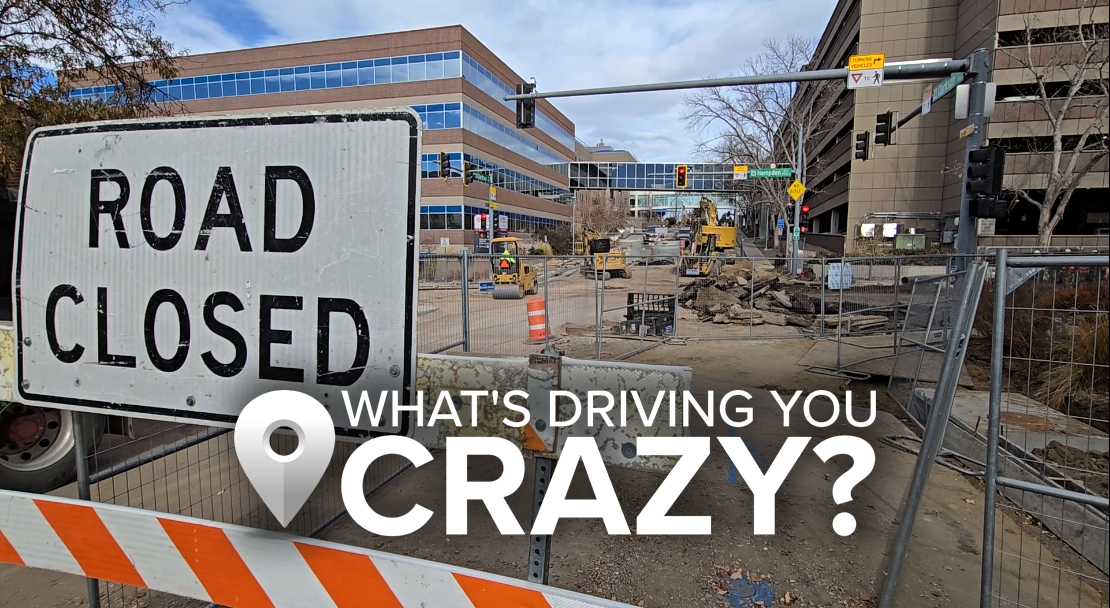JEFFERSON COUNTY, Colo. — Kat in Bailey writes, “What’s driving you crazy? The section of both 470 East and West from Ken Caryl to Wadsworth is so annoyingly bumpy. Making lane changes is risky in a car much less for a motorcycle in this section. Please tell me CDOT has plans to fix this.”
My kids love this section of 470 because it is like going to Elitch’s while staying in the car. Most drivers are not fond of it because, especially at higher speeds, you feel like you might lose control of your car and end up in Chatfield Reservoir. This area has been a problem spot for years and when I learned what the underlying issue is here, it surprised me.
CDOT is planning a resurfacing project for this part of C-470 that would start next summer running between Ken Caryl and Wadsworth. During the pre-construction work, engineers performed some geotechnical research to find out why those bumps are persistently there. The findings came back showing that the soil, about 10 feet below the roadway right under the bumps just west of Wadsworth, contains approximately 5 feet of saturated sandy clay with silt. It is this pocket of mixed soil that is causing the roadway to retract and expand during Colorado's freeze/thaw cycles giving us the 470 mind eraser rollercoaster ride.
CDOT engineers told me they have several methods to treat the poor soil under C-470 to try to limit, hopefully preventing the problem all together. One possible method CDOT could attempt is known as Cement Treated Subbase (CTB), where the poor soil is infused with a cement type mixture to firm up the ground. The concern here, engineers told me, is determining the correct cement mixture so that the native soil doesn't react poorly, compounding the problem.
MORE: Read more traffic issues driving people crazy
I studied up on cement treated base and learned from the website Construction Technology, CTB is a type of soil-cement mixture of native soils and/or manufactured aggregates with measured amounts of portland or blended cement that hardens after compaction and cures to form a strong, durable, material. Portland cement is the most common type of cement that when mixed with water and an aggregate, creates concrete.
This process can be tricky because in CTB construction, the objective is to obtain a thorough mixture of an aggregate/granular material with the correct quantity of cement and water to permit maximum compaction. The completed CTB must be adequately cured to both let the cement hydrate and to harden the cement-aggregate mixture. What CDOT engineers have to determine is what is that right mix of ingredients, especially when it comes to the aggregate, to create a permanent solution to the problem.
The soil and aggregate materials for use in CTB may consist of any combination of gravel, stone, sand, silt and clay; miscellaneous material such as caliche, scoria, slag, sandshell, cinders and ash; waste material from aggregate production plants; high-quality crushed stone and gravel base course aggregates; or old flexible pavements, including the pulverized bituminous surface and stone or gravel base course.
The next step is for the CDOT design team to pour over the geotechnical report and decide what is the best repair method to attempt before they begin the resurfacing project in the summer of 2026. Until then, enjoy the bumps, as this could be the last summer you feel them.
Denver7 Traffic Expert Jayson Luber says he has been covering Denver-metro traffic since Ben-Hur was driving a chariot. (We believe the actual number is over 25 years.) He's obsessed with letting viewers know what's happening on their drive and the best way to avoid the problems that spring up. Follow him on Facebook, Twitter or Instagram or listen to his award winning Driving You Crazy podcast on any podcast app including iTunes, iHeartRadio, Spotify, Podbean, or YouTube.
WHAT'S DRIVING YOU CRAZY? DENVER7'S JAYSON LUBER ANSWERS YOUR QUESTIONS.
-

Why is the entrance to the left-turn lane on Reservoir Rd to Quincy only 35 feet
-

What can be done to stop people making illegal left turns on Havana at Arapahoe?
-

When will the construction on Old Hampden in Englewood be done?
-

Can CDOT improve the signs from Highway 9 to I-70 to make traffic flow better?
-

A very busy Littleton intersection is about to lose all left turns





